Latest CHIRP News
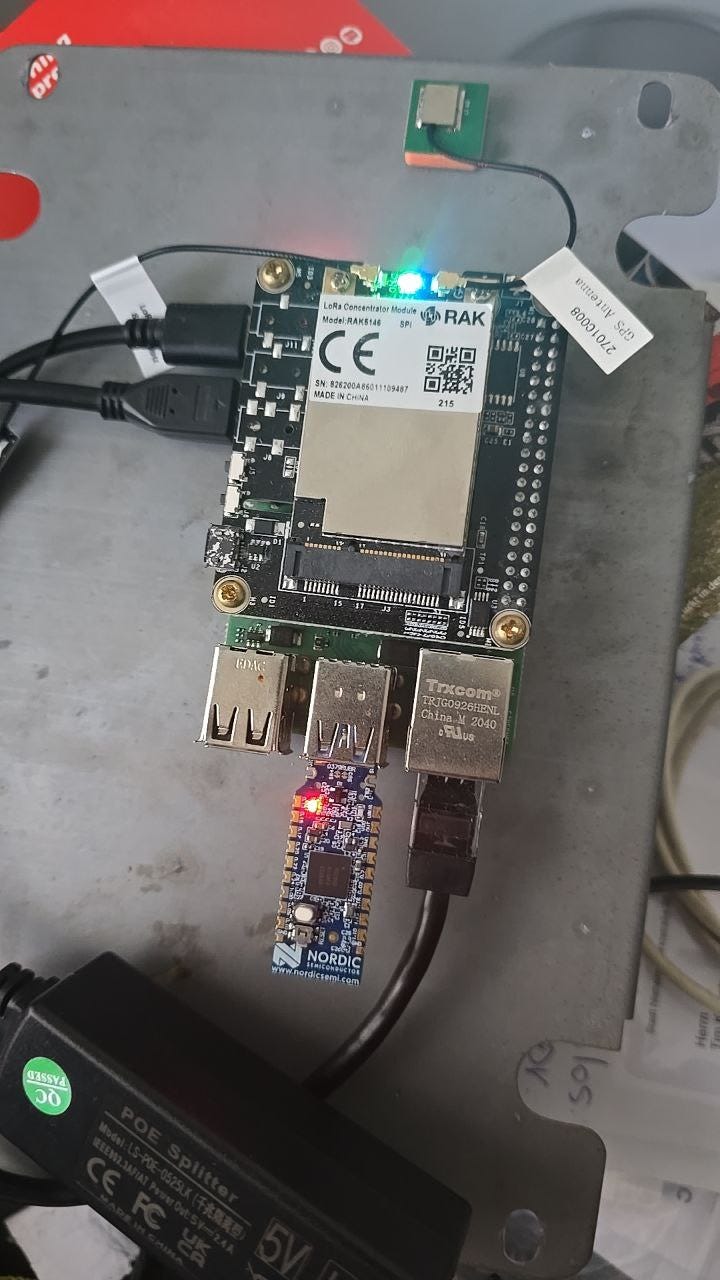
3 months ago
Chirp Launches DIY Raspberry Pi IoT Gateway for Home Automation
Chirp is revolutionizing the Internet of Things (IoT) by making it more accessible and encouraging DIY enthusiasts to explore their creativity. The company has introduced a DIY Raspberry Pi IoT gateway that allows users to automate various aspects of their lives, from home to farm. This initiative aligns with Chirp's decentralized ethos, aiming to break down the barriers between different IoT devices that typically do not communicate due to proprietary systems. With this gateway, users can engage in projects like smart chicken coops, mail delivery notifications, and hydroponics farming, all while learning and saving costs.
The DIY IoT gateway is built using a Raspberry Pi 4, a RAK5146 LoRaWAN concentrator module, and a RAK2287 Pi HAT, among other components. Currently, this setup supports only LoRaWAN devices, but Chirp is actively working on expanding its capabilities to include Zigbee, BLE, and Thread devices through the integration of the nRF52840 USB dongle. This expansion will enhance the versatility of the home automation system, allowing users to connect a wider range of smart devices and create a more interconnected IoT ecosystem.
Chirp encourages community involvement in this project, inviting users to contribute their ideas, improvements, and even custom software solutions. The company has provided comprehensive instructions for assembling the gateway and is eager to see how the community can further develop this initiative. As Chirp continues to innovate and expand its offerings, the potential for automation and smart technology integration grows, making IoT more fun and accessible for everyone. Whether you are a seasoned coder or a curious beginner, there is a place for you in the Chirp community to share and collaborate on exciting IoT projects.
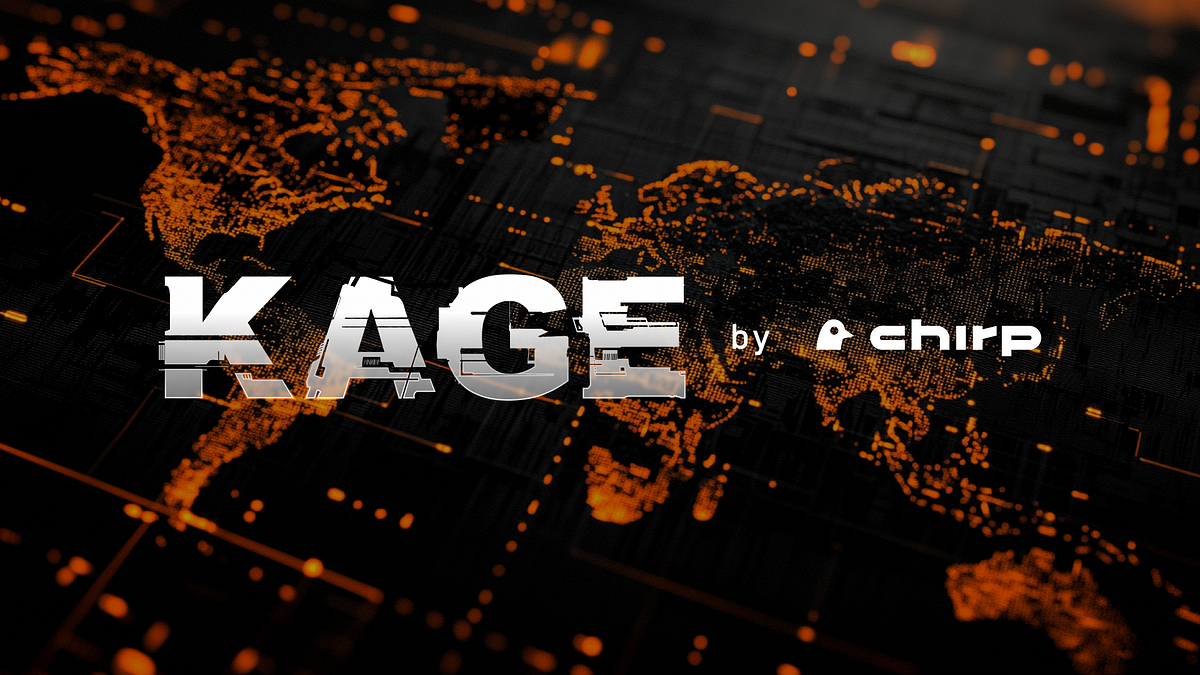
3 months ago
Kage App: Revolutionizing Geolocation with DePIN Technology
The Kage App by Chirp is making waves in the Web3 gaming landscape as the world's first DePIN (Decentralized Physical Infrastructure Network) game with real-world utility. Users can earn rewards by contributing to a crowdsourced geopositioning database, which has already seen impressive engagement. In just three months, from November 2024 to February 2025, users have scanned over 2 billion unique networks, including 481 million Wi-Fi hotspots and 25 million cell towers. This rapid growth starkly contrasts with traditional Web2 competitors like WiGLE, which took 19 years to reach a mere 551 million networks.
The foundation of Kage lies in the concept of wardriving, where users scan for wireless networks while moving through an area. Chirp has gamified this activity, transforming it from a niche practice into a community-driven initiative that builds a decentralized location database capable of replacing GPS in various applications. Unlike many Play-to-Earn games that lack real utility, Kage focuses on creating a geolocation system that can function effectively without reliance on GPS, particularly in areas where traditional systems fail, such as indoors or during GPS jamming.
Chirp's geolocation database leverages various wireless signals, including Wi-Fi, cell towers, and Bluetooth, to estimate device locations. This innovative approach not only enhances navigation in challenging environments but also opens up new possibilities for applications in military, IoT, and child safety. As Chirp continues to expand its database, it is poised to capture a significant share of the projected $472 billion GPS market by offering a decentralized and more efficient alternative. Kage is not merely a game; it represents the dawn of a new era in location technology, emphasizing community involvement and real-world applications in the process.

4 months ago
Chirp Launches $CHIRP Token on Major Exchanges, Aims to Revolutionize IoT Connectivity
Chirp, a decentralized physical infrastructure network (DePIN) built on the Sui blockchain, has officially launched its $CHIRP token on three prominent centralized exchanges: KuCoin, Gate.io, and MEXC Exchange. This launch comes after the successful Initial DEX Offering (IDO) for the Sui DePIN infrastructure layer, which aims to support the development and operation of decentralized physical infrastructure networks. With nearly 1 million users, Chirp is positioning itself as a leader in the rapidly growing DePIN space, connecting various Internet of Things (IoT) devices through blockchain technology.
Tim Kravchunovsky, the CEO and founder of Chirp, expressed pride in the project’s progress, highlighting the choice of Sui as the foundational blockchain even before its testnet launch. He emphasized that the newly launched Sui DePIN infrastructure layer is ideal for a decentralized IoT and telecommunications project like Chirp. The $CHIRP token is integral to Chirp's ecosystem, incentivizing Keepers—operators of Chirp's antennas—to maintain their devices and support the network. Additionally, the token serves as a payment method for network usage and functions as a governance token within Chirp's voting system.
Furthermore, the $CHIRP token is utilized in Kage, a play-to-earn (P2E) game launched by Chirp that encourages players to detect wireless networks using their smartphones. Since its debut in November 2024, Kage has attracted nearly 1 million players who have scanned over 850 million wireless networks worldwide. The geolocation data collected through this game is valuable across various industries, enabling applications such as indoor navigation and low-power geopositioning in challenging environments. Chirp's dual approach—combining a DePIN with a robust IoT platform—aims to create a sustainable ecosystem that empowers communities while delivering advanced IoT solutions.
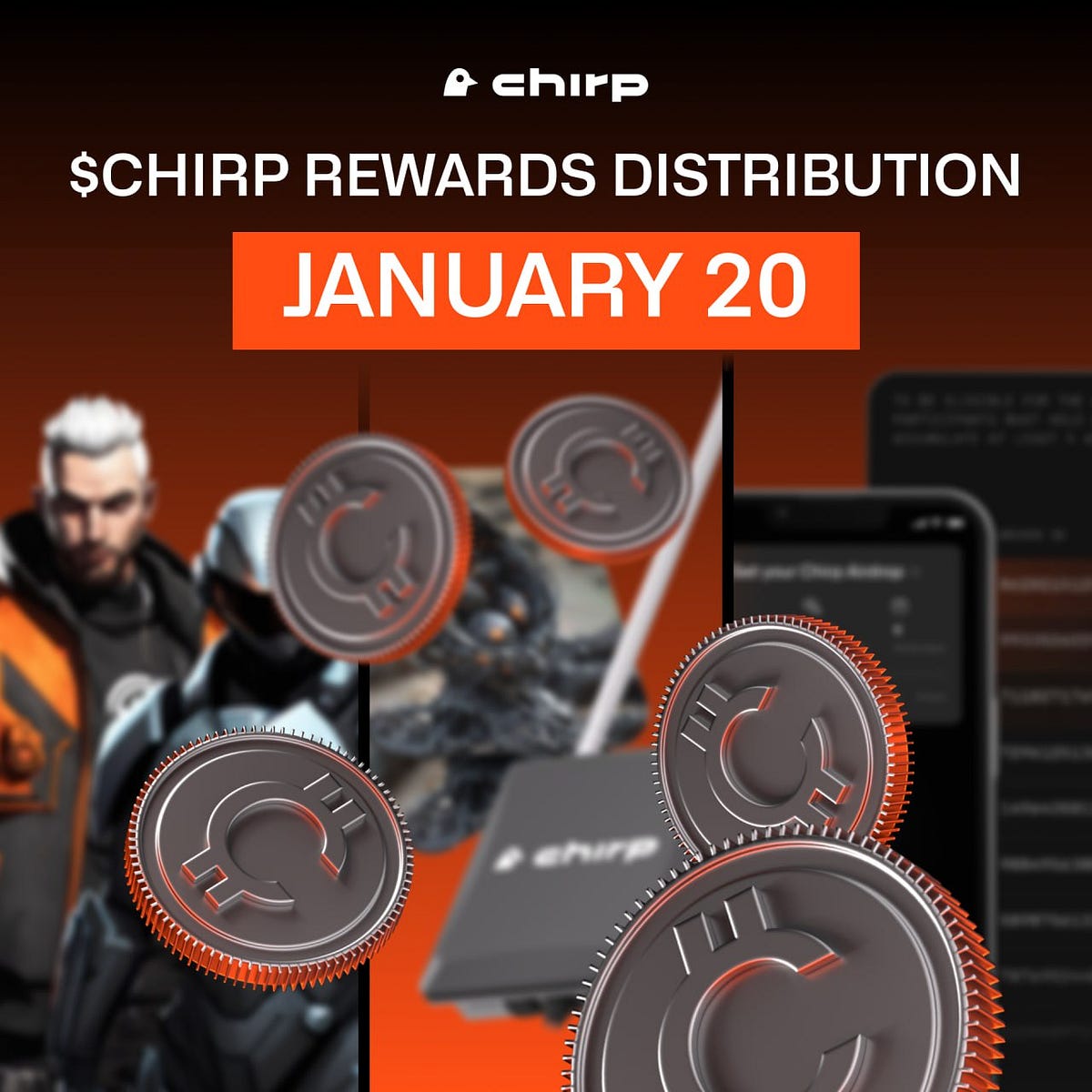
4 months ago
Countdown to $CHIRP Token Launch and Reward Distribution
The countdown to the official launch of the $CHIRP token is on, with January 20, 2025, marking a pivotal moment for the Chirp ecosystem. This event will not only see the token listed on centralized exchanges (CEXs) but will also initiate the distribution of rewards to the community. A total reward pool of 1.73% of the total supply has been allocated for pre-mainnet marketing campaigns, acknowledging the unwavering support from community members, including those engaged in CHIRP mining activities and the dedicated Keepers. Notably, 1,000,000 CHIRP tokens will be distributed to Keepers who have maintained their Blackbird miners in good standing prior to the mainnet launch, with eligibility linked to holding Nest NFTs.
In addition to the rewards for Keepers, the Kage mining community will also be recognized for their contributions. The top 45,000 Data Hunters, who have amassed the highest number of Data Chips and connected their Sui wallets to their Kage profiles, will share a prize pool of 2,000,000 CHIRP tokens. The snapshot for this leaderboard will be taken on January 20 at 12:00 CET, and players engaging in negative behaviors, such as spoofing or spreading misinformation, will be excluded from the rewards. This initiative aims to foster a fair and competitive environment within the Kage ecosystem.
Moreover, Chirp is set to reward participants from various marketing campaigns with a total of 1,630,000 CHIRP tokens. Winners from campaigns like Zealy and the Chirp Tracker App will receive their rewards on January 20, 2025, provided they have connected and verified their Sui wallets. As Chirp continues to build a future where blockchain technology enhances IoT and geolocation solutions, the community is encouraged to engage actively and contribute to this transformative journey.

4 months ago
Chirp Project: A Decentralized Solution for IoT Connectivity
In the rapidly evolving Internet of Things (IoT) landscape, the emergence of various connectivity standards has led to significant fragmentation, complicating the integration of IoT devices into cohesive networks. To address this challenge, the Chirp project has introduced a decentralized physical infrastructure network (DePIN) designed to enhance the connectivity and management of IoT devices. Chirp operates on a mesh network architecture utilizing LoRa and Sub-GHz LoRaWAN radio communication, supported by a comprehensive ecosystem known as Chirp Wireless. This ecosystem is tailored to power decentralized sensors, robotics, and other IoT devices, with hardware gateways called Blackbirds maintained by a decentralized community known as the Keepers.
The Blackbird devices play a crucial role in providing network coverage through multiple connection protocols, including 2.4 GHz LoRa, Sub-GHz LoRaWAN, Zigbee, Bluetooth Low Energy (BLE), and Thread. This versatility makes Chirp suitable for both residential and commercial applications, facilitating both high-bandwidth close-range communication and sparse long-range connectivity. Keepers are incentivized with CHIRP tokens for their contributions to maintaining the network infrastructure. Notably, Chirp differentiates itself from other platforms, such as Helium, by having a single licensed manufacturer for its nodes, which helps manage supply and maintain appropriate reward levels, thus preventing network oversaturation.
The CHIRP token is integral to the Chirp ecosystem, serving multiple purposes, including rewarding Keepers, granting access to the network, and managing governance processes. Users can connect devices through various subscription models, with payments made in CHIRP tokens on the Sui blockchain. With a total supply capped at 300 million tokens, the distribution is planned over the first ten years post-token generation event (TGE). While Chirp presents a promising solution to unify the fragmented IoT sector, its current stage, with approximately 400 active nodes and limited commercial clients, highlights the need for stable revenue generation to ensure ongoing network participation. The future of Chirp hinges on its ability to attract commercial users who can provide consistent demand for its services.

5 months ago
Revolutionizing Infrastructure: The Rise of DePin Crypto
Decentralized Physical Infrastructure Networks (DePin) are revolutionizing the way we think about real-world infrastructure by leveraging blockchain technology. This innovative approach aims to redistribute power from centralized corporations back to the community, making systems like storage and streaming more accessible and equitable. With a surge in interest, several DePin coins are emerging as key players in this space, offering unique solutions and investment opportunities. Notable projects include Chirp, Render, BitTorrent, Filecoin, Theta Network, MultiversX, and Ocean Protocol, each contributing to the decentralization movement in distinct ways.
Chirp stands out as a decentralized telecommunications network built on the Sui blockchain, focusing on IoT connectivity. By allowing users to operate their devices and earn CHIRP tokens, it incentivizes participation and fosters a more interconnected digital landscape. Render Network, on the other hand, connects creators with GPU providers, democratizing access to rendering services. Its recent transition from Ethereum to Solana has enhanced transaction speeds, making it a favorite among creatives. Meanwhile, BitTorrent has evolved into a decentralized file-sharing platform, rewarding users with BTT tokens for sharing files, showcasing the potential of community-driven content distribution.
Filecoin operates like an Airbnb for data storage, enabling users to rent out digital storage space while ensuring data security through blockchain verification. Theta Network is redefining video streaming by allowing users to share bandwidth, enhancing content delivery while rewarding participation with TFUEL tokens. MultiversX offers a scalable blockchain infrastructure, facilitating efficient transactions for various applications, while Ocean Protocol focuses on decentralized data exchange, supporting AI and machine learning through tokenized datasets. As DePin continues to grow, these projects exemplify the shift towards a more decentralized and user-centric digital economy.
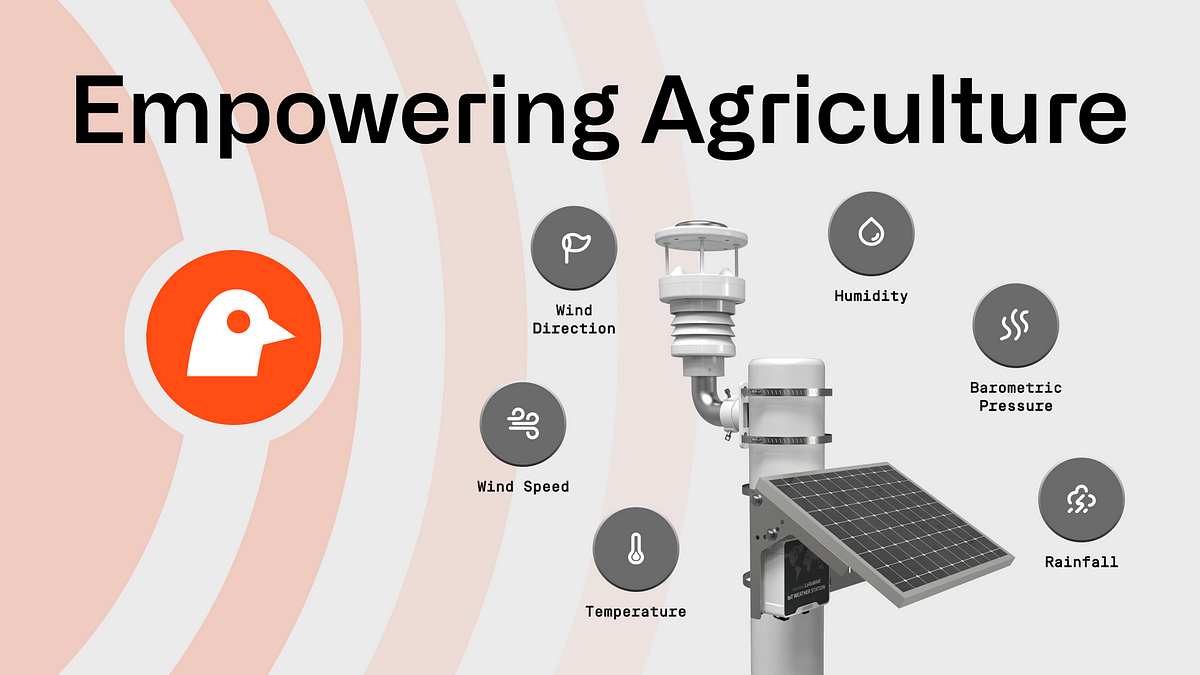
6 months ago
Revolutionizing Agriculture with IoT Technology
The integration of IoT technology in agriculture is transforming the sector, allowing farmers to make informed, data-driven decisions that enhance productivity and sustainability. The global smart agriculture market is projected to reach $20 billion by 2026, driven by the increasing adoption of IoT solutions across farms. These technologies optimize various aspects of crop and livestock management, helping farmers reduce costs while improving yields and environmental stewardship. As IoT devices proliferate, they offer significant advantages, including automation of resource management and real-time data collection on critical factors such as weather and soil conditions.
IoT devices like weather stations and soil sensors play a pivotal role in smart agriculture. Weather stations provide essential data on temperature, humidity, and precipitation, enabling farmers to make timely adjustments to irrigation and planting schedules. Soil sensors deliver real-time insights into moisture levels, optimizing water use and fertilization strategies. Additionally, livestock monitoring collars ensure proactive management of animal health and location. By automating irrigation and resource distribution based on real-time data, farmers can conserve resources and enhance crop health, ultimately leading to increased profitability.
Chirp's platform enhances the effectiveness of these IoT devices by integrating them into a cohesive system managed from a single dashboard. The incorporation of blockchain technology further strengthens data management, ensuring secure, tamper-proof storage and traceability of the vast amounts of information generated by IoT devices. Chirp's Blackbird miners provide long-range connectivity for these devices, facilitating reliable data transmission over large areas without the need for individual internet connections. This seamless integration of IoT technology positions Chirp as a vital partner for farmers, empowering them to tackle challenges and capitalize on new opportunities in the evolving agricultural landscape.
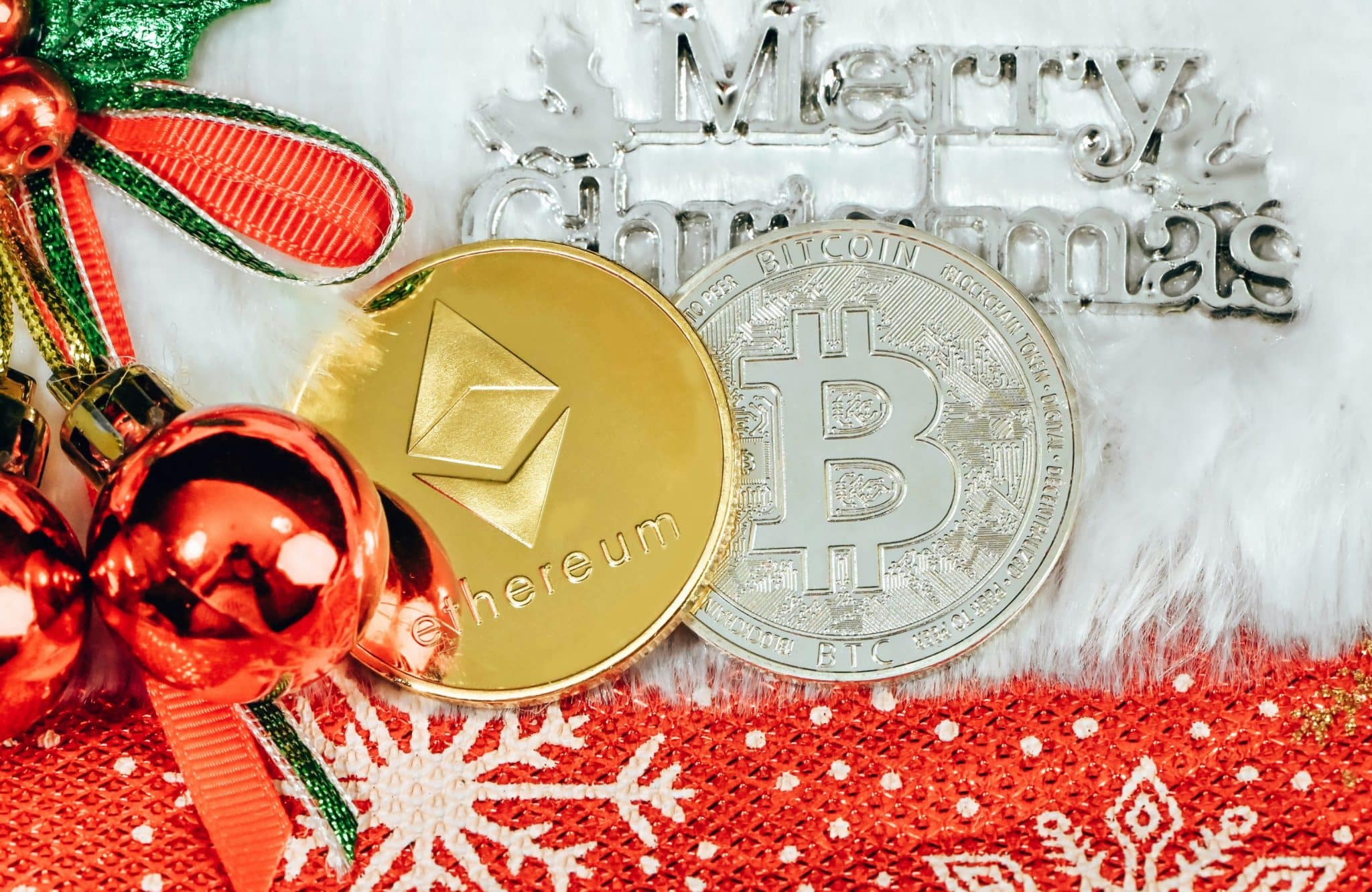
7 months ago
Emerging Crypto Narratives and Blockchain Innovations for 2025
As we look ahead to 2025, the cryptocurrency landscape is poised for significant evolution, particularly with the emergence of blockchains like Solana, SUI, and Bitcoin. Following the FTX crash, many investors have turned their attention back to Solana, which offers a unique advantage over Ethereum by providing faster and cheaper transactions. With only 5% of the global population currently owning cryptocurrency, experts believe we are still in the early stages of this digital revolution. While Bitcoin remains the dominant force in the market, Ethereum's influence is waning, primarily due to its congested layer 2 solutions, which may hinder its performance in the upcoming cycle.
Solana is rapidly gaining traction, boasting impressive statistics such as a transaction speed of 1,500 transactions per second (tps) and surpassing Ethereum and Tron in total economic value locked. The upcoming Firedancer update is expected to enhance its capabilities further, potentially reaching 1 million tps. Additionally, the SUI blockchain is emerging as a strong contender in the decentralized physical infrastructure networks (DePIN) space, offering solutions for the Internet of Things. With a focus on real-time, secure interactions among interconnected devices, SUI is attracting developers and projects like Karrier One and Chirp Wireless, which aim to revolutionize wireless access and decentralized telecom.
The current narratives in the crypto space include real-world assets, AI, GameFi, and meme coins, with a particular emphasis on DePIN. Bitcoin continues to outperform other asset classes, reinforcing its position as a leading investment choice. As the cryptocurrency market evolves, the belief in Web3 remains steadfast, with many anticipating a bullish trend in the near future. For those still exploring the crypto landscape, the message is clear: the opportunity to invest in transformative technologies is ripe, and the time to act is now.

7 months ago
Chirp's Innovative Approach to Decentralized Physical Infrastructure Networks
Decentralized Physical Infrastructure Networks (DePIN) are poised to revolutionize the Web3 landscape by creating a bridge between traditional physical assets and decentralized systems. By distributing the ownership and maintenance of infrastructure among community members, DePIN offers unique investment opportunities and practical applications for both enthusiasts and the general public. However, the success of DePIN relies heavily on achieving a balance between supply and demand, where an oversupply of infrastructure without corresponding demand can lead to diminished participant rewards and weakened token value.
Chirp's approach to DePIN stands out due to its focus on quality over quantity. Rather than rapidly deploying numerous miners, Chirp strategically manages network growth to ensure sustainability. For instance, in Berlin, the network is effectively covered with just nine Blackbird devices, preventing market saturation and ensuring that community members, known as Keepers, receive attractive rewards. This method not only maintains high rewards for participants but also supports a healthy ecosystem, avoiding the pitfalls of over-saturation that can plague other DePIN projects.
Chirp's vision extends beyond mere infrastructure; it aims to solve pressing IoT challenges by integrating blockchain technology with a wide range of devices. By addressing issues like vendor lock-in and fragmentation, Chirp facilitates seamless management of IoT devices across various sectors, including logistics, healthcare, and smart cities. The platform's ability to connect diverse devices and enable trusted data sharing through blockchain enhances operational efficiency and reliability. As Chirp continues to lead in the DePIN space, it exemplifies the importance of a sustainable, demand-driven approach for the future of decentralized IoT networks.
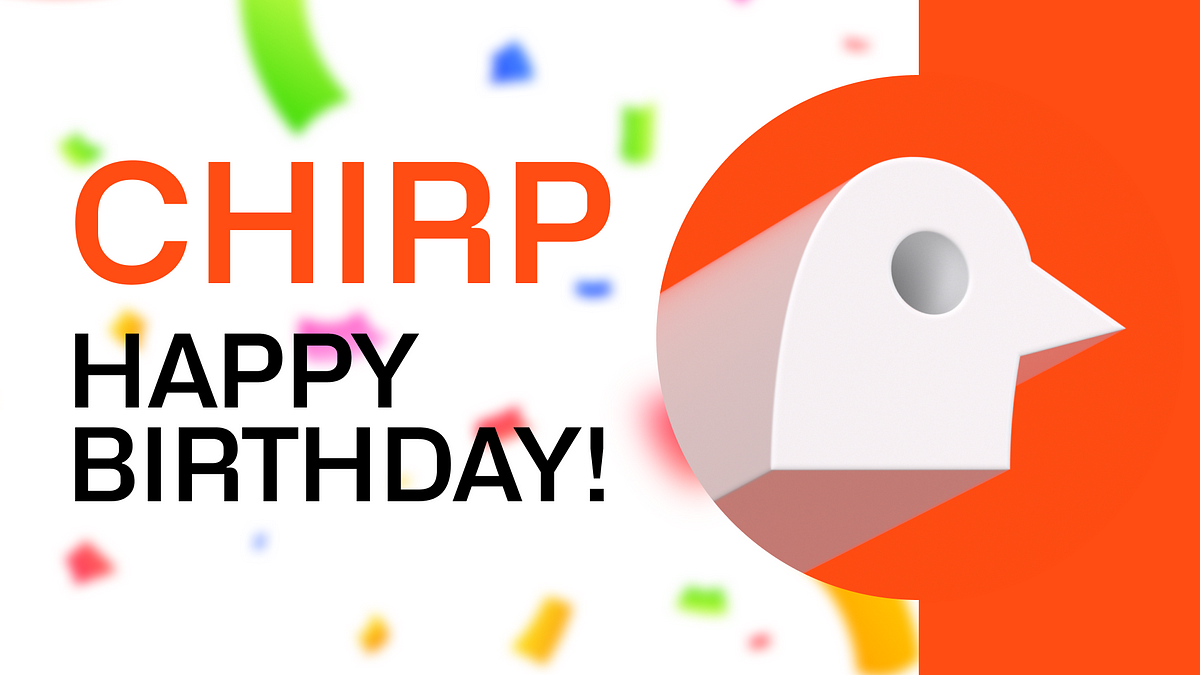
7 months ago
Chirp Celebrates Two Years of Innovation and Growth in IoT
On October 18, 2022, Chirp was introduced to the Web3 community, building upon the groundwork established by Mesh+. With a vision to transform the Internet of Things (IoT) and telecommunications sectors through decentralized infrastructure, Chirp has made remarkable progress over the past two years, even amidst a prolonged bear market. The company has launched various products, formed strategic partnerships, and advanced its DePIN and IoT infrastructure. As it approaches the mainnet launch and the debut of the CHIRP token on the Sui network, this anniversary serves as a moment to reflect on its journey and celebrate its achievements since inception.
In 2022, Chirp laid a solid foundation by articulating a clear vision aimed at disrupting traditional telecom models through decentralization. The company focused on addressing key challenges in the IoT sector, such as complexity and scalability. A world-class team was assembled, leading to the introduction of community-owned Blackbird miners and the first features of an intuitive IoT platform designed to simplify user experience. The CHIRP token was also introduced with a deflationary model to incentivize network participation. By the end of 2022, Chirp had built a dedicated community of early supporters, positioning itself for a productive 2023.
The year 2023 marked a period of expansion and innovation for Chirp, highlighted by a partnership with RAKWireless to develop custom gateways that enhanced IoT connectivity. The successful deployment of Blackbird miners in 33 countries solidified Chirp's global presence. Security enhancements were made to ensure a zero-trust environment for its decentralized network. The integration of the Sui blockchain further improved scalability and transaction speed. As Chirp celebrates its third anniversary in 2024, it is poised for significant launches, including the mainnet and CHIRP token listings, while also introducing a DePIN P2E mobile game that gamifies participation in the ecosystem, promising real-world utility and benefits for its community.
Signup for latest DePIN news and updates